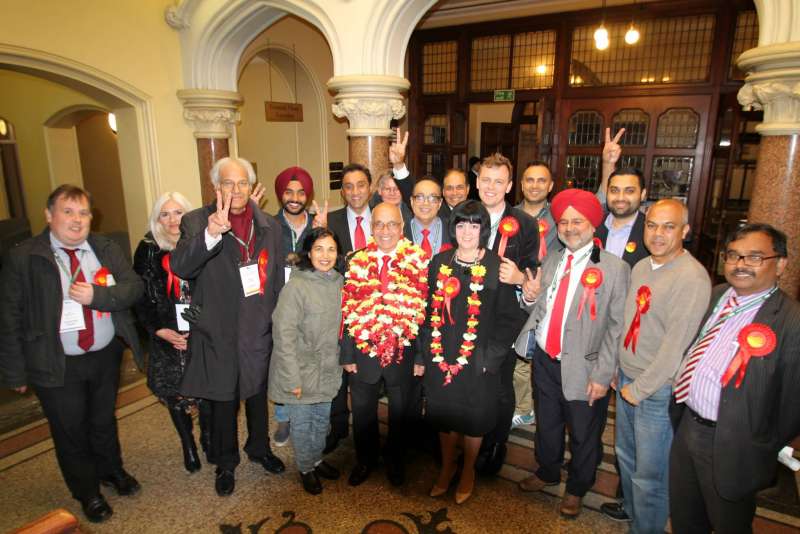It is wrong to think of the BAME vote as a block homogeneous group and Labour needs to be sophisticated and specific in its response to different communities. Labour mustn’t take Black and Asian voters for granted….writes Virendra Sharma, MP for Ealing Southall

The lessons for the Labour Party from the 2015 general election are myriad but one we ignore at our peril is engaging more energetically with Black, Asian and minority ethnic (BAME) voters. The meltdown in Scotland has shown the catastrophic dangers of taking Labour voters for granted, and Labour must not make the same mistake with BAME voters.
For many elections BAME voters have been Labour’s most loyal supporters but recent studies have shown that loyalty is not a given anymore. Added to this is the increased size and influence of this group of voters often times in crucial marginal seats. Operation Black Vote prior to the election highlighted over 100 seats where the BAME vote exceeded the majority of the sitting MP. Going forward the numbers of minority voters will increase significantly – 20% of Britain’s population by 2030 and 30% by 2050 compared to 8% in 2001.
The Tories under Cameron have worked hard to shed their negative image with BAME voters, with worrying results for Labour. For the first time in an election the Tories have won a million BAME votes (33% of BAME voters) according to the British Future poll by Survation. Labour still won 1.6 million BAME votes (52% of the estimated 3m BAME voters) however many of these were in seats like my own where Labour already had a sizeable majority and they added significantly to that majority. Despite our majority we still failed to win some key marginal, with large numbers of BAME voters, such as Harrow East and Croydon Central.
The British Future poll also showed the gap between Labour and Conservative voters narrowing dramatically amongst Asian voters (Labour 50% Conservative 38%) and this is even more worrying when split into faith groups. Although Christians and Muslims still backed Labour (Christians: Labour 56% Conservative 31%; Muslims: Labour 64% Conservative 25%) amongst Hindus the Conservatives attracted more support (Hindus: Labour 41% Conservative 49%).
Where the Sikh vote went is disputed. The British Future poll showed a majority of Sikh voters backing the Conservatives (Labour 41% Conservative 49%) but this was based on a very small sample size. The Sikh Federation did a more extensive poll which put Labour ahead with just under 50% compared to the Conservative’s with 36% but worryingly this was well over double the 15% the Conservatives got in 2010. Looking at seats where there is a large Sikh population like Ealing Southall, Slough, Ilford North and Wolverhampton South West there was a swing to Labour indicating the Sikh vote stayed loyal to Labour but we can not afford to be complacent.
Given all this what are the lessons we should learn from the 2015 election? As an MP of Indian origin and as the Chair of the Indo-British All Party Parliamentary Group let me make a few observations particularly about the Asian vote.
Firstly it is wrong to think of the BAME vote as a block homogeneous group and Labour needs to be sophisticated and specific in its response to different communities. The Tories were very effective in doing this. David Cameron visited India three times during his tenure as Prime Minister, he even planned a fourth, and made sure that the all-important visit to the Sikh Golden Temple at Amritsar was on the itinerary. He also often referenced Narendra Modi when visiting Hindu Mandirs in the UK in marginal seats knowing full well that he was the name on all the Hindu / Gujurati UK Indian diaspora’s lips. Ed Miliband unfortunately never visited India and the message to diaspora communities didn’t go beyond the standard thanks for their contribution to Britain.
Secondly it is vital that we engage and campaign with BAME communities continuously. As Tory election strategist Lynton Crosby said, “you can’t fatten a pig on market day.” What we did came too little, too late, whilst the Tories appointed diaspora champions early on in their term of office, continuously reached out to BAME communities using Downing Street and the trappings of power and had timed events, like the Gandhi statue unveiling, for just before the short campaign began.
Finally the advantage that Labour had in the number of BAME MPs has been eroded as the Tories have consciously selected BAME candidates in winnable seats and have appointed Asian ministers such as Sajid Javid and Priti Patel. Research suggests that BAME communities want parties to also look like them. The 2011 census put the BAME population at 14%, meaning we need 91 BAME MPs to reflect society. After the election there are now 42, nearly double the numbers in 2010 but not even halfway to being representative of the nation as it currently is. We have historically been the most representative party, and we cannot let the Tories take this mantle. Labour BAME candidates having been selected must then position themselves, reaching out to all communities, not as Sikh, Hindu or Muslim candidates, but as Labour candidates.
Whatever we do going forward Labour cannot be complacent, the stakes are too high and the Tories having narrowed the gap in winning BAME votes must be pushed back again through continuous positive engagement with all of Britain’s diverse communities.
(Virendra Sharma is the MP for Ealing Southall. )